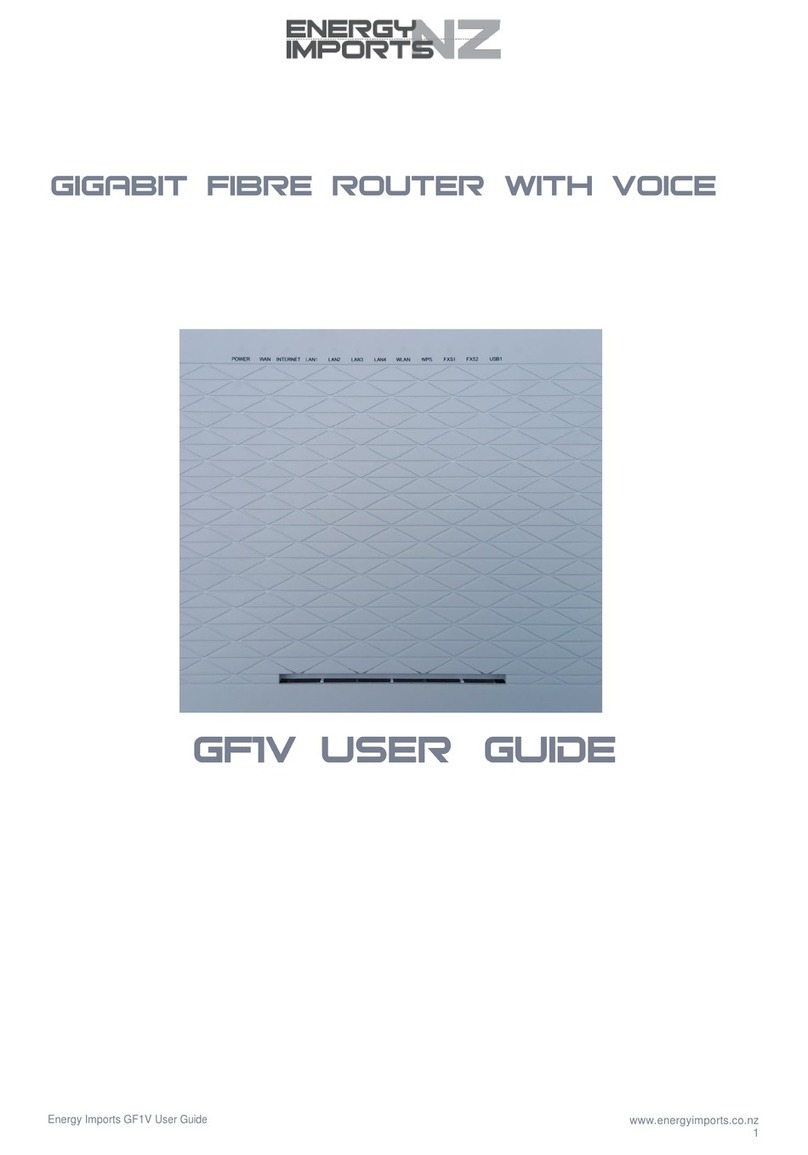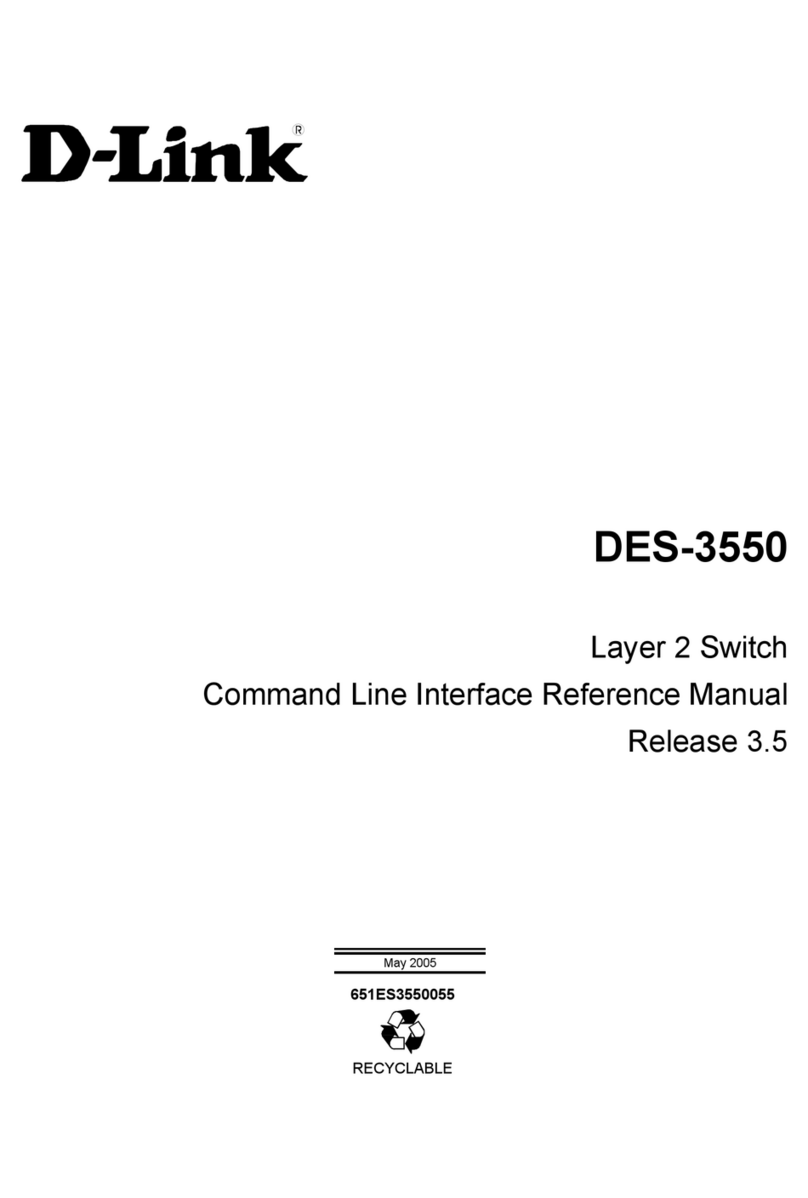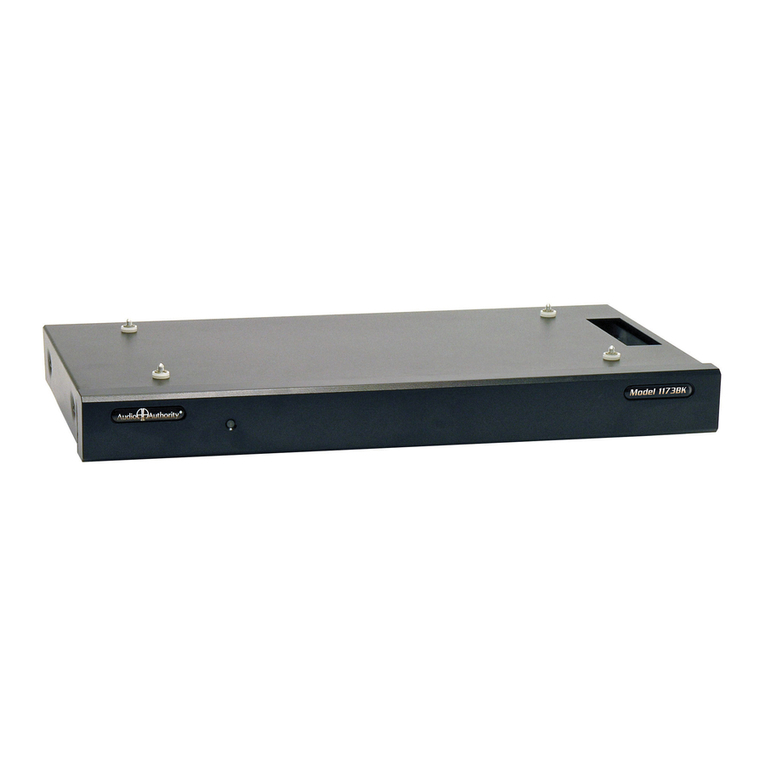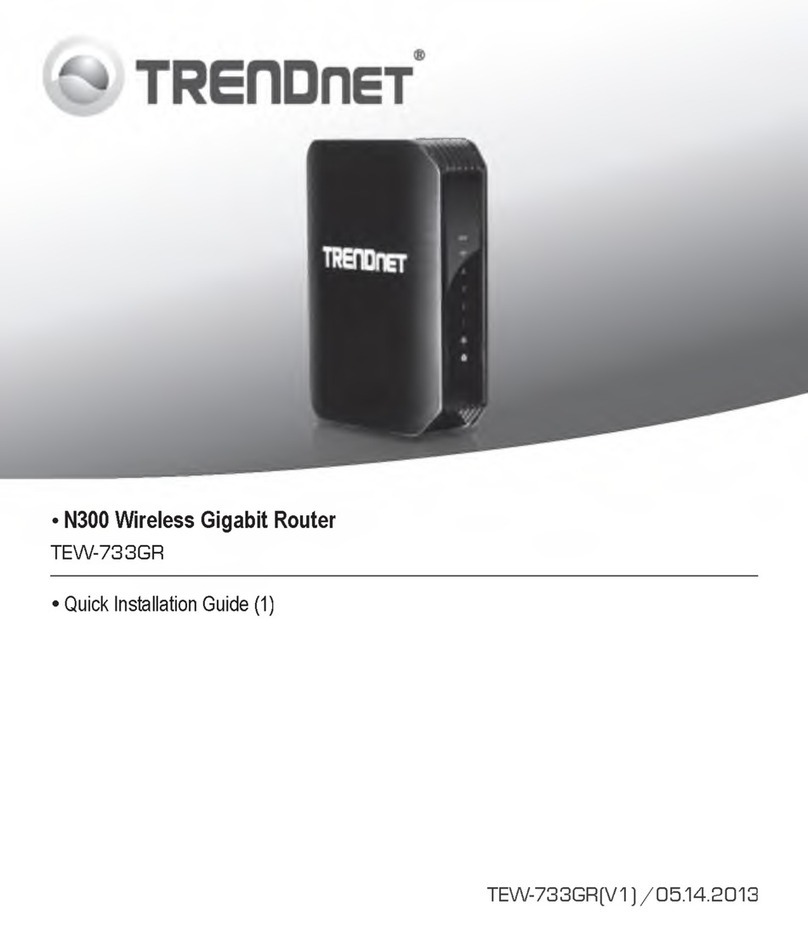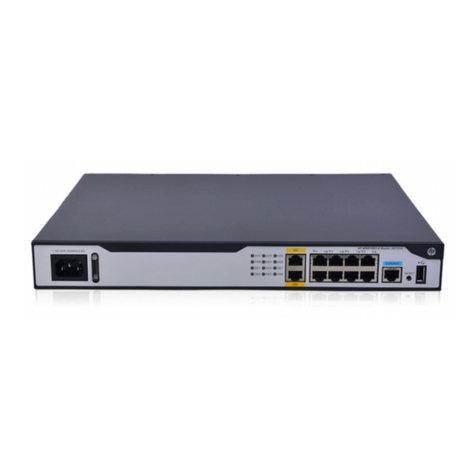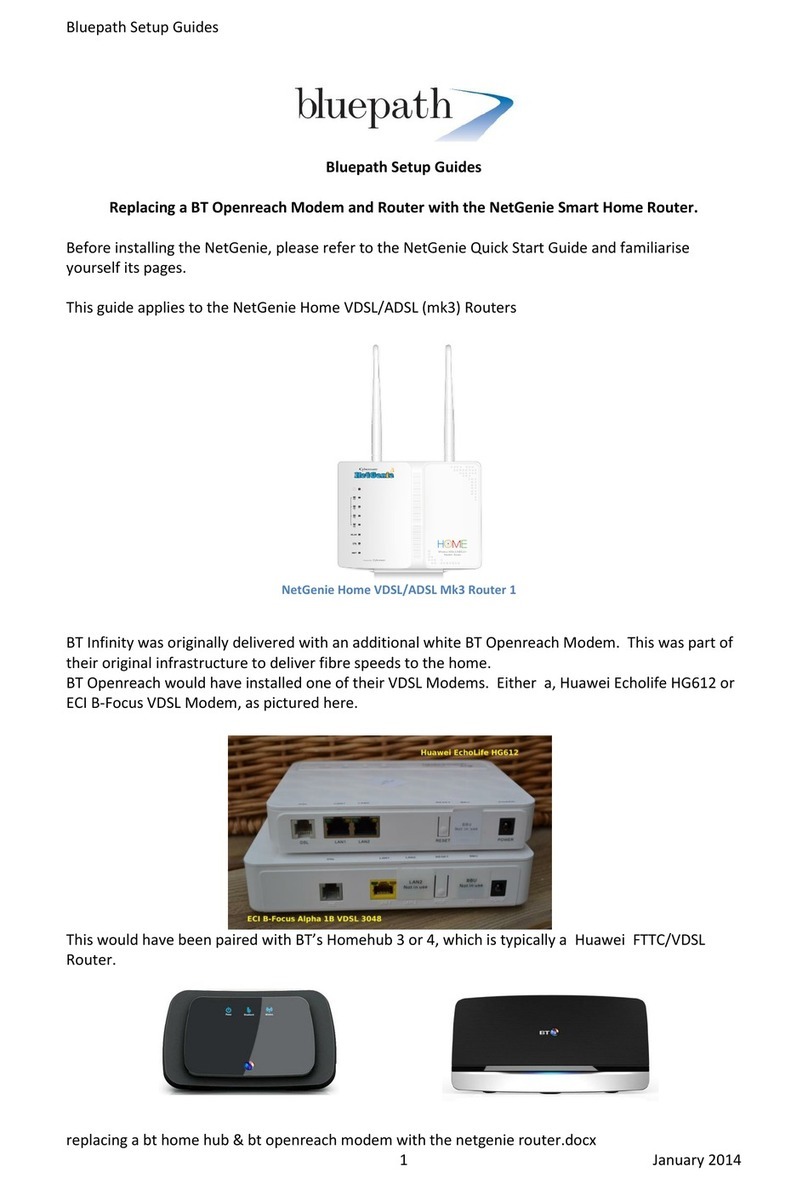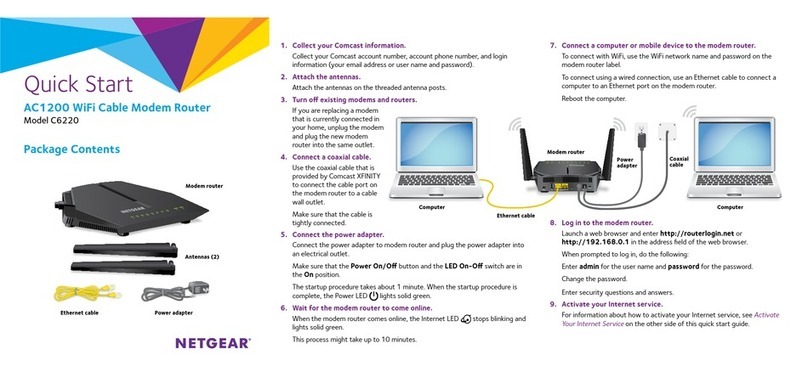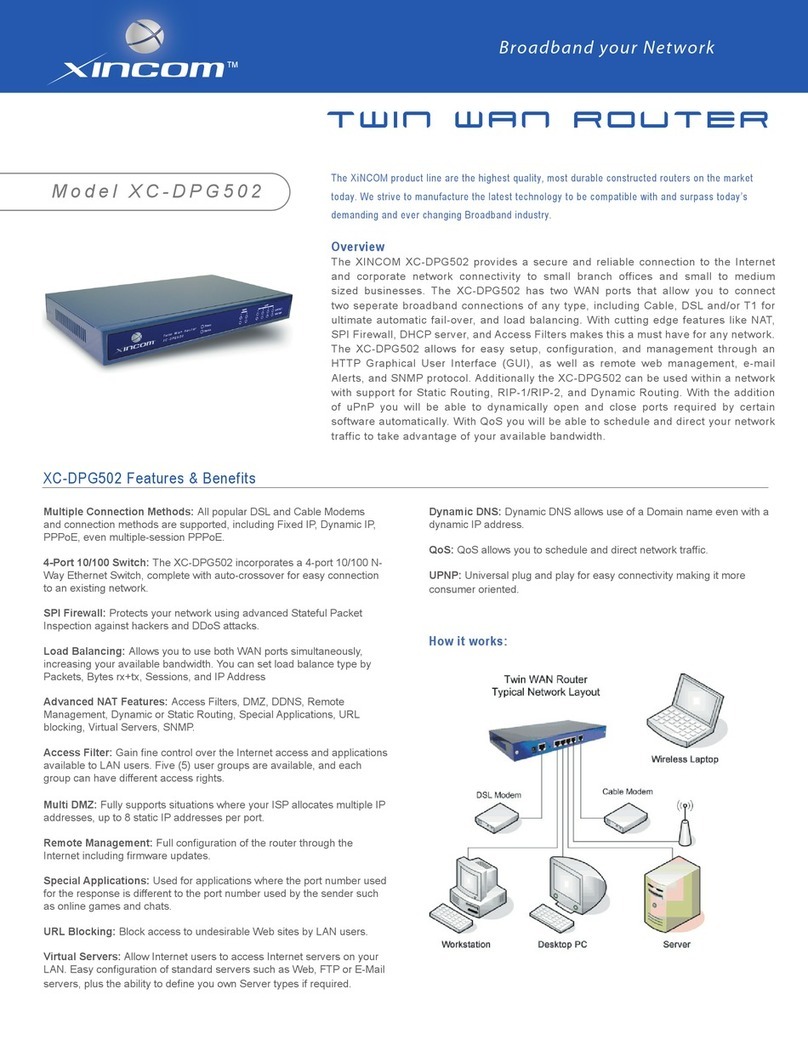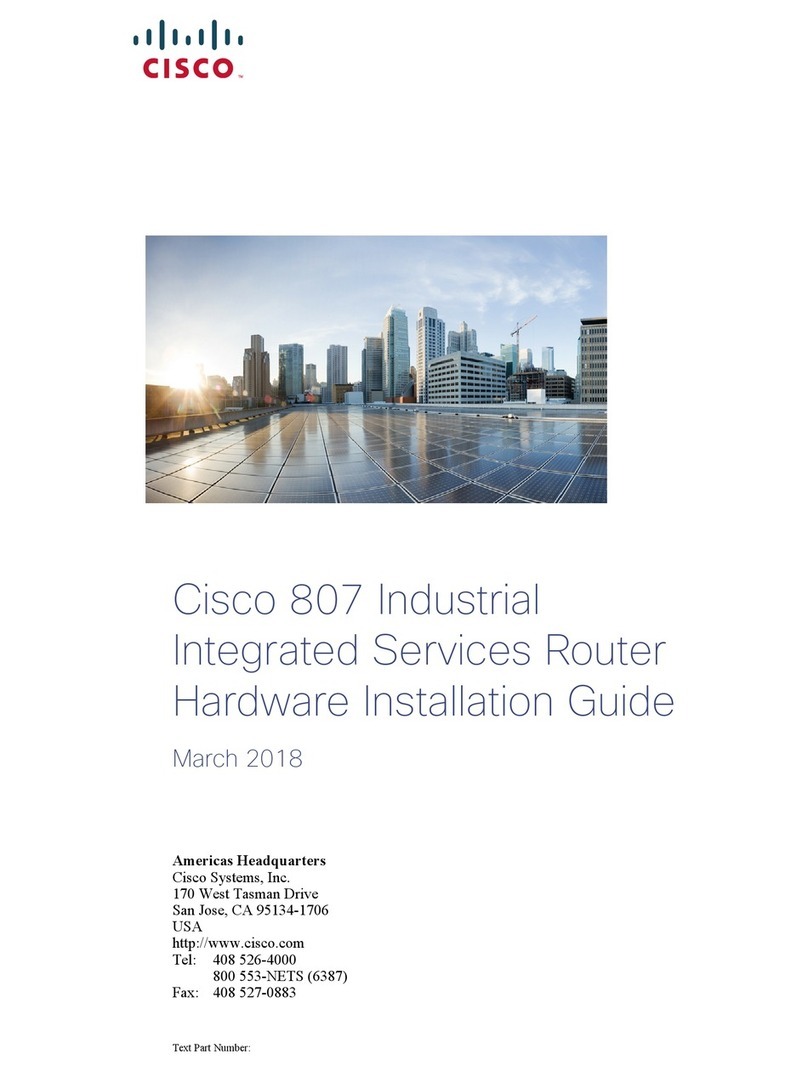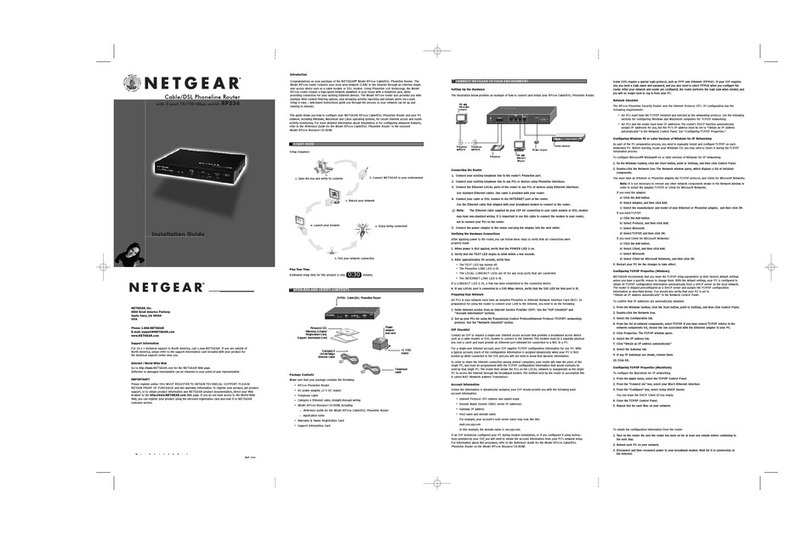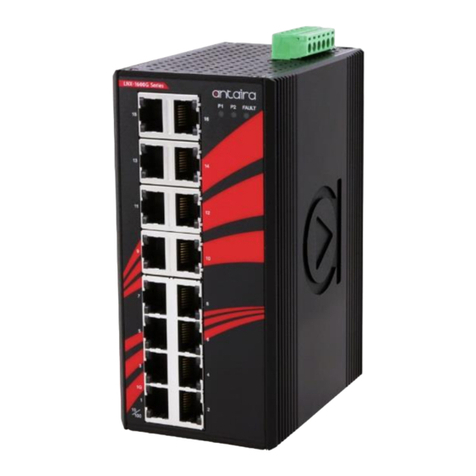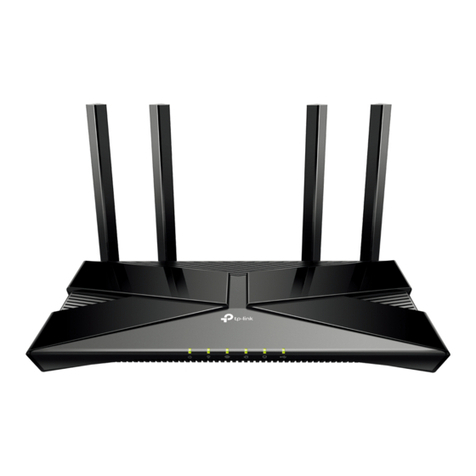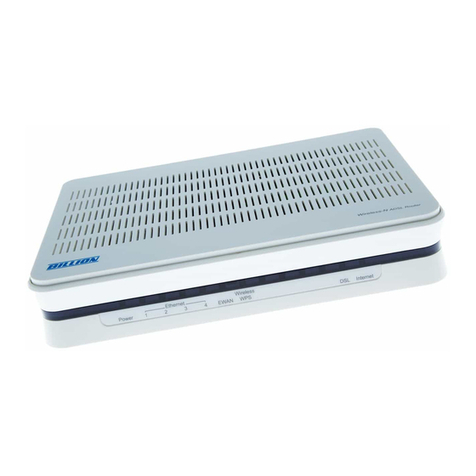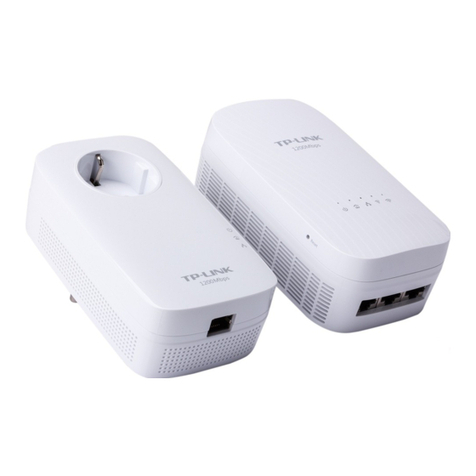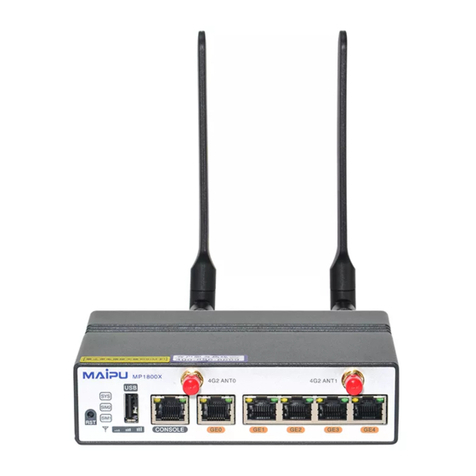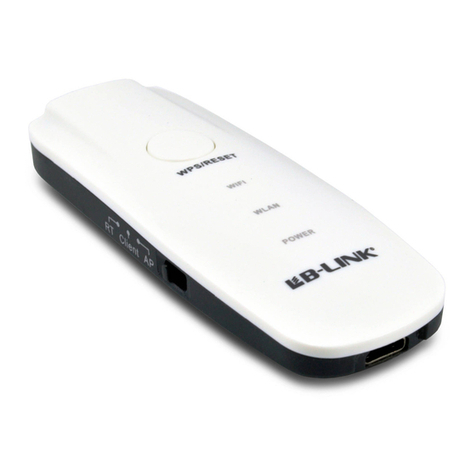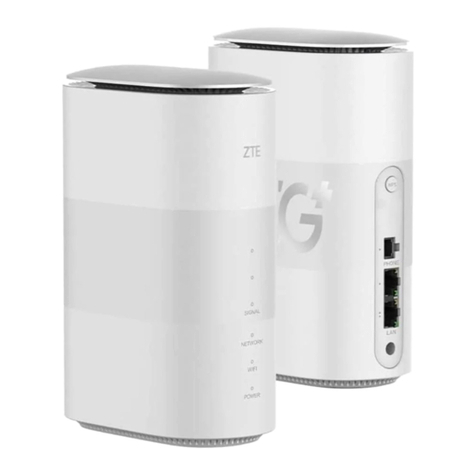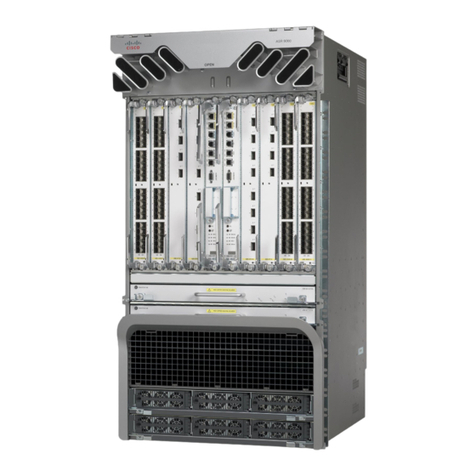Energy Imports VB104W User manual

VB104W VDSL
User Manual

i
Contents
1Safety Precautions ..........................................................................................1
2Overview.........................................................................................................2
2.1 Packing List.........................................................................................2
2.2 Application ..........................................................................................2
2.3 Features..............................................................................................3
2.4 Standards Compatibility and Compliance ............................................4
3Hardware Description and Installation..............................................................5
3.1 LEDs and Interfaces............................................................................5
3.2 Hardware Installation...........................................................................7
4PC Network Configuration and Login...............................................................9
4.1 PC Network Configuration...................................................................9
4.2 Logging in to the DSL Router ............................................................10
5Web-based Management............................................................................... 11
5.1 Setup ................................................................................................ 11
5.1.1 Wizard............................................................................... 11
5.1.2 Internet Setup....................................................................20
5.1.3 Wireless ............................................................................23
5.1.4 Local Network....................................................................28
5.1.5 Local IPv6 Network............................................................31
5.1.6 Time and Date...................................................................33
5.2 Advanced..........................................................................................34
5.2.2 ALG...................................................................................40
5.2.3 Port Forwarding.................................................................41
5.2.4 DMZ..................................................................................43
5.2.5 Parental Control ................................................................44
5.2.6 Filtering Options................................................................48
5.2.7 QoS Configuration.............................................................53
5.2.8 Anti-Attack Settings...........................................................59
5.2.9 DNS ..................................................................................60
5.2.10 Dynamic DNS....................................................................61
5.2.11 Network Tools....................................................................62
5.2.12 Routing..............................................................................72
5.2.13 NAT...................................................................................78
5.3 Management.....................................................................................78

ii
5.3.1 System Management.........................................................79
5.3.2 Firmware Update...............................................................81
5.3.3 Access Controls ................................................................82
5.3.4 Diagnosis ..........................................................................87
5.3.5 Log Configuration..............................................................91
5.4 Status................................................................................................92
5.4.1 Device Info........................................................................92
5.4.2 Wireless Clients.................................................................93
5.4.3 DHCP Clients....................................................................94
5.4.4 Logs..................................................................................94
5.4.5 Statistics............................................................................95
5.4.6 Route Info..........................................................................96
5.5 Help ..................................................................................................97
6Trouble Shooting...........................................................................................98

VB104W User Manual
1
1 Safety Precautions
Take the following instructions to prevent the device from risks and damage
caused by fire or electric power.
Use the type of power marked in the volume label.
Use the power adapter in the product package.
Pay attention to the power load of the outlet or prolonged lines. An
overburden power outlet or damaged lines or plugs may cause electric
shock or fire accidents. Check the power cords regularly. If you find any
damage, replace it at once.
Proper space left for heat dissipation is necessary to avoid damage
caused by overheating to the device. The long and thin holes on the device
are designed for heat dissipation to ensure that the device works normally.
Do not cover these heat dissipation holes.
Do not put this device close to a heat source or under a high temperature
occurs. Keep the device away from direct sunshine.
Do not put this device close to an overdamp or watery place. Do not spill
fluid on this device.
Do not connect this device to a PC or electronic product unless instructed
by our customer engineer or your broadband provider. Wrong connection
may cause power or fire risk.
Do not place this device on an unstable surface or support.

VB104W User Manual
2
2 Overview
The VB104W VDSL Router integrates wireless LAN and USB service into one
unit. It is designed to provide a simple and cost-effective DSL Internet connection
for a private Ethernet and 802.11g/802.11b/802.11n wireless network. The
Router combines high-speed DSL Internet connection, IP routing for the LAN,
and wireless connectivity in one package.
The Router is easy to install and use. The Router connects to an Ethernet LAN or
computers via standard Ethernet ports. The DSL connection is made using
ordinary telephone line with standard connectors. Multiple workstations can be
networked and connected to the Internet by a single Wide Area Network (WAN)
interface and single global IP address. The advanced security enhancements,
packet filtering and port redirection, can help protect your network from
potentially devastating intrusions by malicious agents from outside your network.
Network and Router management is done through the web-based management
interface accessed through the local Ethernet using any web browser. You may
also enable remote management to enable configuration of the Router via the
WAN interface.
2.1 Packing List
2.2 Application
Home gateway
Wireless LAN
SOHOs
Small enterprises
Higher data rate broadband sharing
Audio and video streaming and transfer
Network and online gaming

VB104W User Manual
3
2.3 Features
User-friendly GUI for web configuration
Compatible with all standard Internet applications
Industry standard and interoperable xDSL interface
Simple web-based status page displays a snapshot of system
configuration, and links to the configuration pages
Downloadable flash software updates
Support for up to 8 permanent virtual circuits (PVC)
Support for up to 8 PPPoE sessions
Support RIP v1 & RIP v2
WLAN with high-speed data transfer rates, compatible with IEEE
802.11b/g/n
IP routing and bridging
Asynchronous transfer mode (ATM) , PTM (Packet Transfer mode), and
digital subscriber line (DSL) support
Point-to-point protocol (PPP)
Network/port address translation (NAT/PAT)
Quality of service (QoS)
Wireless LAN security: WPA, 802.1x, RADIUS client
Universal plug-and-play(UPnP)
Web filtering
Management and control
Web-based management (WBM)
Command line interface (CLI)
TR-069 WAN management protocol
Remote update
System statistics and monitoring
DSL router is targeted at the following platforms: DSL modems, wireless
access points and bridge.
Multicast listener discovery (MLD)
Internet group management protocol (IGMP)
Application layer gateway (ALG)

VB104W User Manual
4
2.4 Standards Compatibility and Compliance
Support application level gateway (ALG)
ITU G.992.1 (G.dmt)
ITU G.992.2 (G.lite)
ITU G.994.1 (G.hs)
ITU G.992.3 (ADSL2)
ITU G.992.5 (ADSL2+)
ITU G.993.1 (VDSL)
ITU G993.2 (VDSL2)
ANSI T1.413 Issue 2
IEEE 802.3
IEEE 802.3u
IEEE 802.11b
IEEE 802.11g
IEEE 802.11n

VB104W User Manual
5
3 Hardware Description and Installation
3.1 LEDs and Interfaces
Front Panel
Figure 1 Front panel
The following table describes the indicators on the front panel.
Indicator
Color
Status
Description
Power
Green
On
The device is powered on.
Off
The device is powered off.
Red
On
Self-test fails, or failure occurs, or the device is
starting.
DSL
Green
On
DSL link is established.
Slow
Blink
The DSL line is attempting to detect signals.
Fast Blink
Signals have been detected, and the DSL line is
attempting to establish link.
Internet
Green
On
Physical layer connection and IP connection is
established in routing mode.
Blink
IP connection is established, and messages are
being transmitted.
Off
IP connection or physical layer link is not
established.
Red
On
IP connection fails.
LAN
1/2/3/4
Green
On
Ethernet link is established.
Blink
Data is being transmitted through a LAN
interface.
Off
Ethernet link is not established.
WLAN
Green
On
WLAN is enabled.

VB104W User Manual
6
Indicator
Color
Status
Description
Blink
Data is being transmitted by the wireless
module.
Off
WLAN is disabled.
WPS
Green
On
Negotiation is successful under Wi-Fi protected
setup.
Blink
Negotiation is in progress under Wi-Fi protected
Setup.
Off
Wi-Fi protected setup is disabled.
USB
Green
On
A USB device is connected.
Blink
Data is being transmitted.
Off
No USB connection.
Rear Panel
Figure 2 Rear panel
The following table describes the interface of the device.
Interface/Button
Description
DSL
RJ-11 interface connecting to a telephone set through a
telephone cable
LAN1/2/3/4
Ethernet RJ-45 interfaces connecting to the Ethernet
interfaces of computers or Ethernet devices
Reset
Reset to the factory defaults. To restore factory defaults, keep
the device powered on and push a paper clip into the hole.
Press down the button for more than 5 seconds and then
release.
USB2
USB port, for connecting USB devices.

VB104W User Manual
7
Interface/Button
Description
Power
Interface connecting to the power adapter. The power
adapter output is: 12V DC, 1000mA
Side Panel
Interface/Button
Description
WPS
This button is used for enabling WPS
PBC mode. If WPS is enabled, press this
button, and then the wireless router starts
to accept the negotiation of PBC mode.
WLAN
WLAN switch, for enabling or disabling
the WLAN function.
USB1
USB port, for connecting USB devices.
ON/OFF
Push to power on/off the device.
3.2 Hardware Installation
Step 1 Connect the DSL port of the device and the Modem port of the splitter
with a telephone cable. Connect the phone to the Phone port of the
splitter through a telephone cable. Connect the incoming line to the
Line port of the splitter.
The splitter has three ports:
Line: Connect to a wall phone port (RJ-11 jack).
Modem: Connect to the DSL port of the device.
Phone: Connect to a telephone set.
Step 2 Connect a LAN port of the device to the network card of the PC
through an Ethernet cable (MDI/MDIX).
Note:Use twisted-pair cables to connect the device to a Hub or switch.

VB104W User Manual
8
Step 3 Plug one end of the power adapter to the wall outlet and the other end
to the Power port of the device.
Connection: Figure 3 displays the application diagram for the connection of the
device, PC, splitter and telephone sets, when no telephone set is placed before
the splitter.
Figure 3 Connection diagram (without telephone sets before the splitter)
Installing a telephone directly before the splitter may lead to failure of connection
between the device and the central office, or failure of Internet access, or slow
connection speed. If you really need to add a telephone set before the splitter,
you must add a microfilter before a telephone set. Do not connect several
telephones before the splitter or connect several telephones with the microfilter.

VB104W User Manual
9
4 PC Network Configuration and Login
4.1 PC Network Configuration
Each network interface on the PC should either be configured with a statically
defined IP address and DNS address, or be instructed to automatically obtain an
IP address using the network DHCP server. DSL router provides a DHCP server
on its LAN and it is recommended to configure your LAN to automatically obtain
its IP address and DNS server IP address.
The configuration principle is identical but should be carried out differently on
each operating system.
The following displays the TCP/IP Properties dialog box on Windows XP.
Figure 4 PC Network Configuration

VB104W User Manual
10
TCP/IP configuration steps for Windows XP are as follows:
Step 1 Choose Start > Control Panel > Network Connections.
Right-click the Ethernet connection icon and choose Properties.
On the General tab, select the Internet Protocol (TCP/IP) component and
click Properties. The Internet Protocol (TCP/IP) Properties window
appears.
Select the Obtain an IP address automatically radio button.
Select the Obtain DNS server address automatically radio button.
Click OK to save the settings.
4.2 Logging in to the DSL Router
To log in to the DSL router, do as follows.
Step 1 Open a Web browser on your computer.
Step 2 Enter http://192.168.1.1 (default IP address of the DSL router) in the
address bar. The login page appears.
Step 3 Enter the user name and the password. The default username and
password are admin and admin. The username and password of the
common user are user and user. The username and password of the
support account are support and support.
Step 4 You need not enter the username and the password again if you select
the browser option Remember my password. It is recommended to
change these default values after logging in to the DSL router for the first
time.
Step 5 Click OK to log in to the Web page. Otherwise, please click Cancel to
exit the login page.
After logging in to the DSL router as a super user, you can query, configure, and
modify all the settings, and diagnose the system.

VB104W User Manual
11
5 Web-based Management
This chapter describes how to use Web-based management of the DSL router,
which allows you to configure and control all of DSL router features and system
parameters in a user-friendly GUI.
5.1 Setup
In the main interface, click Setup tab to enter the Setup menu as shown in the
following figure. The submenus are Wizard, Internet Setup, Wireless,Local
Network, Local IPv6 Network, Time and Date and Logout.
5.1.1 Wizard
Wizard enables fast and accurate configuration of Internet connection and other
important parameters. The following sections describe configuration parameters.
When subscribing to a broadband service, you should be aware of the method,
by which you are connected to the Internet. Your physical WAN device can be
Ethernet, DSL or both. Technical information about the properties of your Internet
connection is provided by your Internet service provider (ISP). For example, your
ISP should inform you that you are connected to the Internet using a static or
dynamic IP address, or the protocol used for communication over the Internet,
such as PPPoA or PPPoE,.
Step 1 Choose Setup > Wizard. The page shown in the following figure
appears.

VB104W User Manual
12
Step 2 Click Setup Wizard. The page shown in the following figure appears.
Step 3 There are four steps to configure the device. Click Next to continue.
Step 4 Set the time and date.

VB104W User Manual
13
Step 5 Configure the Internet connection. Set the VPI and VCI.

VB104W User Manual
14
PPPoE/ PPPoA
When you choose the DSL Mode as ATM and the Protocol as PPPoE or
PPPoA, the page shown in the two following figure appears.
In this page, enter the user name and password as provided by your ISP.

VB104W User Manual
15
Dynamic IP
When you choose the DSL Mode as ATM and the Protocol as Dynamic IP, the
page shown in the following figure appears.

VB104W User Manual
16
Static IP
When you choose the DSL Mode as ATM and the Protocol as Static IP, the
page shown in the following figure appears. Enter the IP Address, Subnet Mask,
Default Gateway and Primary DNS Server.

VB104W User Manual
17
Bridge
When you choose the DSL Mode as ATM and the Protocol as Bridge, the page
shown in the following figure appears.
Note:When you choose the DSL Mode as PTM, please refer to the configurations
under ATM mode for corresponding Internet configurations.
Table of contents
Other Energy Imports Network Router manuals
